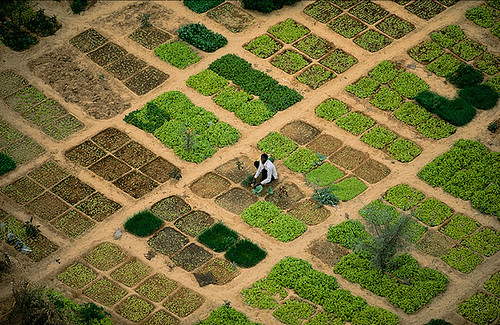
In countries where an overwhelming majority of the population relies on rain-fed agriculture, drought can have serious consequences. Mali found this out during a crippling decade-long drought during the 1970s and 1980s. As part of drought response efforts, the Malian government collaborated with a range of humanitarian actors starting in 1982 to provide farmers with climate information to help mitigate the worst impacts. Nearly 30 years later, the project is still going strong. Researchers at Mali’s national meteorological service and the International Research Institute for Climate and Society have chronicled its evolution in a new case study for the World Resources Institute.
Mali is one of the most stable countries in Africa. It’s also one of the poorest; more than half of the population lives on less than a dollar a day. Over 80 percent of people rely on agriculture as their main source of food and income.
Yet agriculture is a game of chance in Mali. While the southern part of the country averages 55 inches of rainfall annually, the northern part of Mali sees much less, averaging 9 inches per year. These numbers only tell part of the story, though. Across the country, rainfall is notoriously more variable than the averages belie. Generally, dry years string together followed by a string of wet years. “Average” years are few and far between.
From 1972-1984, a severe drought affected the country. The intersection of vulnerability and variability combined to create a humanitarian disaster. During the period, an estimated 100,000 people died due to hunger. Another 750,000 became completely dependent on foreign food aid.
Mali’s national meteorological service (known by its French acronym DNM) started a pilot program in 1982, to ensure a catastrophe of this magnitude didn’t occur again. DNM gathered an interdisciplinary team that initially reached out to 16 farmers. The pilot was a success, and since its inception more than 2,500 farmers have become directly involved with the program. Countless others have also received indirect help from knowledge passed through informal networks.
The program initially offered seasonal, three- and ten-day forecasts to farmers. In addition to these resources, the program now reaches out to farmers through workshops, radio broadcasts and weather monitoring stations. These efforts have increased farmers’ resiliency to climate shocks and, in the process, crop yields and income.
For a full overview of the project and the techniques used, visit the World Resources Report site to download the case study (pdf). For more information, the first volume of Climate & Society also chronicles some of the program’s successes.




[…] researchers do work in some pretty amazing places. And lucky for the rest of us, the occasional office treats find their way back with them. […]